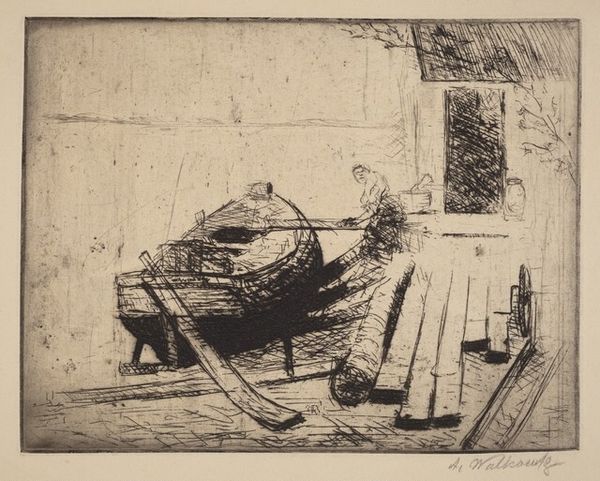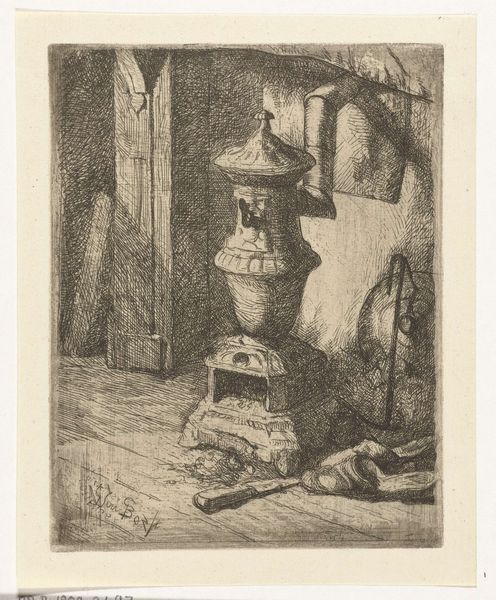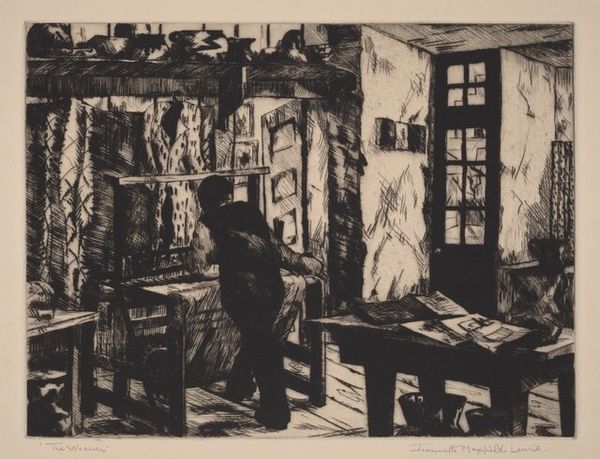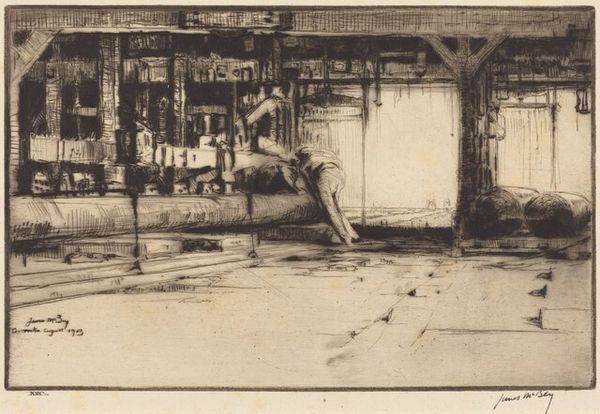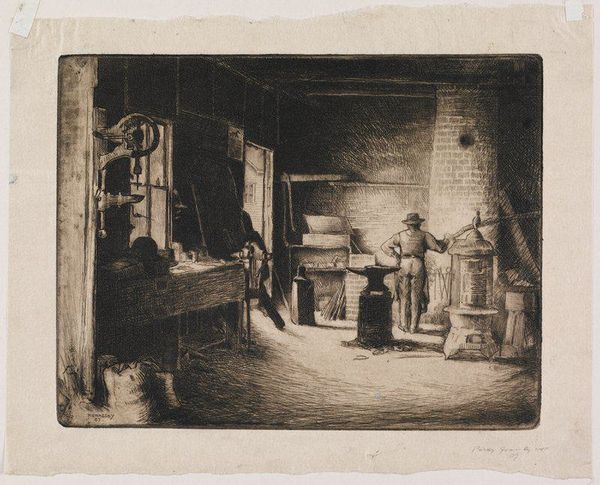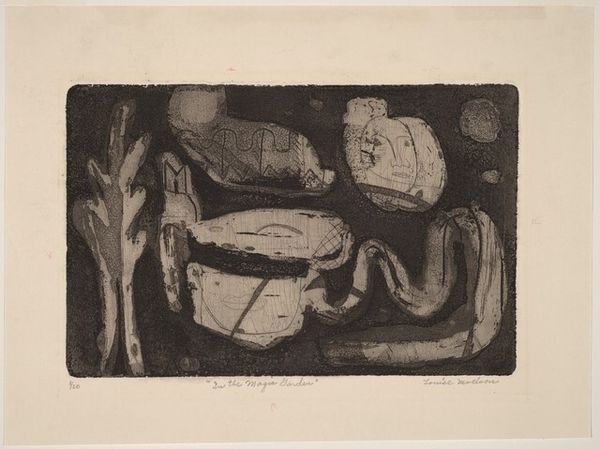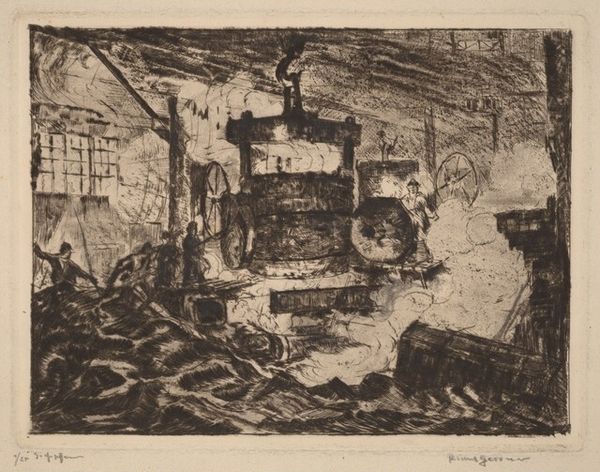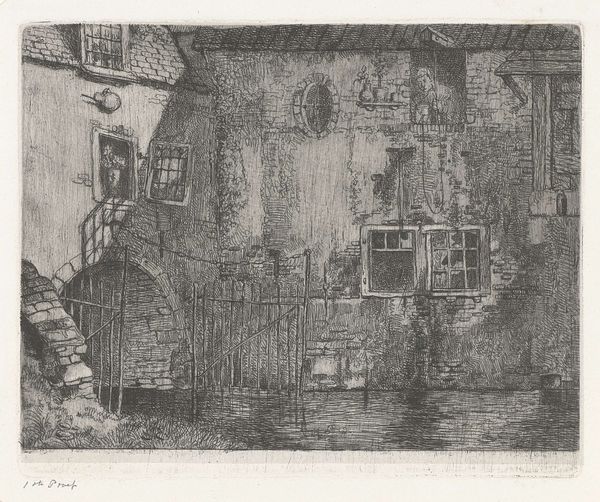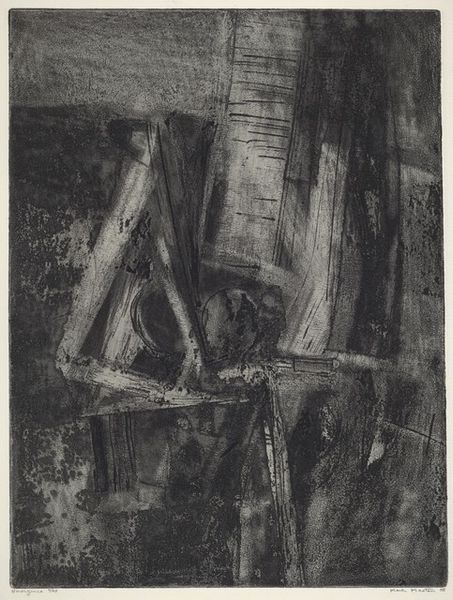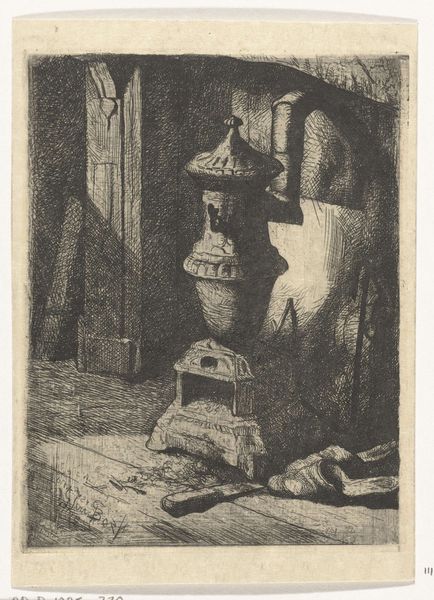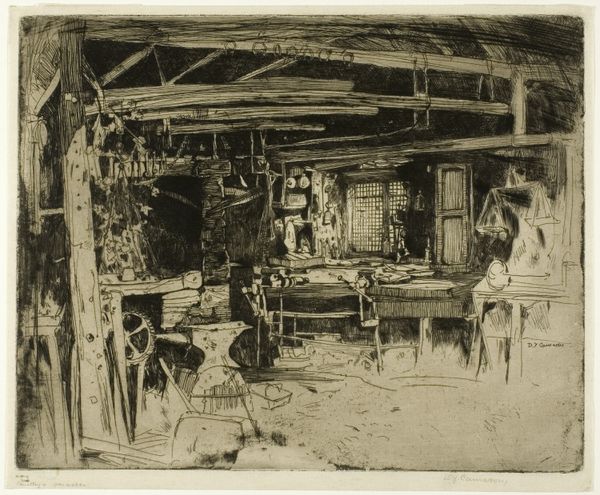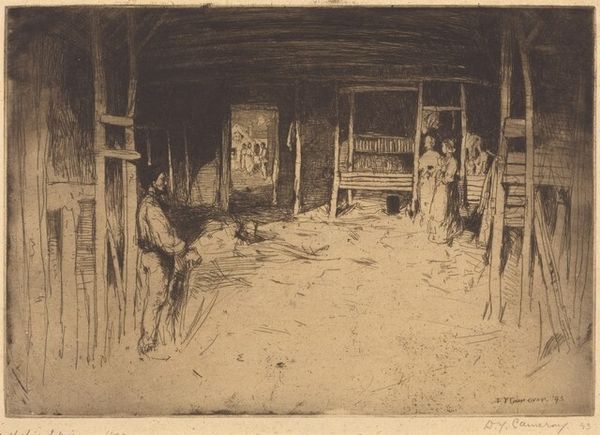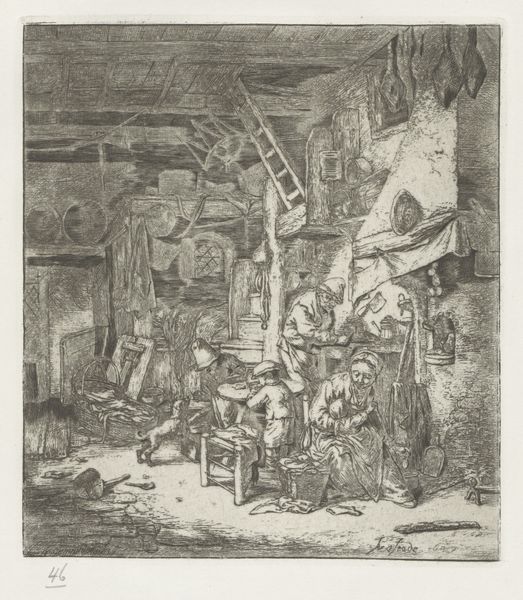
graphic-art, print, etching, intaglio
#
graphic-art
# print
#
etching
#
intaglio
Copyright: National Gallery of Art: CC0 1.0
Editor: Here we have Bernard Greenwald's 1965 print, "Dark Still Life," created with etching and intaglio techniques. The heavy use of shadow definitely lives up to its name. What symbols do you see embedded within this murky tableau? Curator: I see a potent meditation on memory and obsolescence. The still life, traditionally a celebration of life and abundance, here becomes a memento mori. Note the predominance of containers—bottles, jars. What do containers signify to you? Editor: Holding... memories, perhaps? Or things that are meant to be preserved? Curator: Exactly. Greenwald's use of the container implies both preservation and decay. Consider how the blurred and indistinct forms undermine any sense of solidity or permanence. What happens to memory when it fades? The objects become ghostly, haunting the composition, suggesting loss. Notice how the textures and dark tonality lend to a sense of melancholy, a reflection on time's relentless passage and the ephemerality of existence. The print medium, with its ability to create multiples, further underscores this idea of fleeting moments. Is this depiction personal or is he hinting towards something more universal? Editor: It makes me think about old family photos and how they are blurry and incomplete, only giving you glimpses into a past you didn’t experience. Thank you! Curator: And it is through such glimpses and personal resonance that these seemingly mundane objects begin to reveal a profound understanding of the human condition. Each shadow becomes a fragment of a forgotten story, and each container becomes a vessel of untold emotions. Food for thought.
Comments
No comments
Be the first to comment and join the conversation on the ultimate creative platform.

